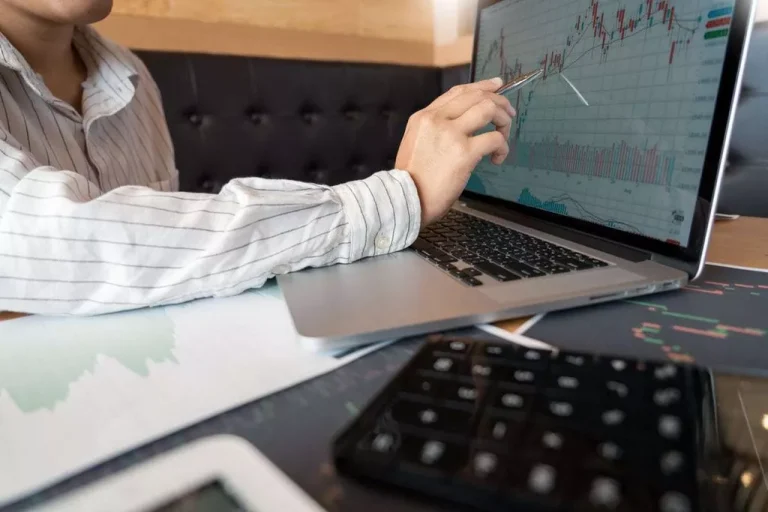Content
However, algorithms lack human insight and remain prone to hidden errors and overoptimization. For algo trading to keep growing, developers must emphasize robustness, adaptability and prudent risk management. When used properly, algorithmic trading can no doubt benefit certain trading strategies and complement human traders. Yet full automation is unlikely to completely take Cryptocurrency over trading any time soon.
It Requires Technical Knowledge
Once a platform has been selected, the investor should open an account, complete the risk assessment questionnaire, review and select a recommended portfolio, and fund the account. Understanding the advantages and disadvantages of automated investing can help individuals determine whether it is the right approach for their respective financial goals and risk tolerance. In contrast, automated investing may encompass a wider range of technologies and strategies, including active trading algorithms and more complex investment solutions. The second step necessitates to customize the algorithm to be followed by the auto-trading system, in the process of making. 3Commas is an automated trading terminal designed to bootstrap & fast trading simplify trading across the globe. The core feature you can get from the 3Commas terminal is its advanced trading bots and analytical tools.

How to Build Your Algorithmic Trading Bot in 2024
This includes basic functions like limit orders and stop-losses, which execute automatically once specific conditions are met. Autrading systems consistently execute trades in accordance with specified criteria, guaranteeing that deals are carried out in a standardized manner under various market conditions. This aids in keeping a disciplined trading strategy and preventing rash choices. This also makes https://www.xcritical.com/ it possible to make rapid modifications, manage risks, and make decisions when needed.

How Does Automated Investing Work?
- The bot analyzes the market and gives you the best trading decisions void of emotions, just as in manual trading.
- With a reliable plan, ongoing maintenance, and sound risk control, automated trading can help you reach your trading goals.
- Backtesting applies trading rules to historical market data to determine the viability of the idea.
- These are basic criteria to consider when making an automated trading program.
Autotrading is a trading plan where buy and sell orders are automatically placed based on an underlying system or program. These orders are placed when the trade conditions in the underlying system or program are met. When starting with automated trading, it’s best to stick with simple strategies. As you gain more experience and understanding of how the system works, you can gradually start using more complex strategies. Before embarking on the journey of automated trading, there are several critical aspects you need to reflect upon.
Swing Trading Signals (Try 1 Month For $1.
If you are new to trading, this learning curve can feel steep as you are managing both technical and strategic aspects. While automated trading systems come with a plethora of benefits, they shouldn’t be viewed as a substitute for mindful and deliberate trading. They may struggle to respond to sudden shifts in market conditions or ‘black swan’ events that have not been programmed into their algorithms. Despite the automatic nature of these systems, they still require monitoring. Changes in market conditions could lead to an increase in orders that are filled at undesirable levels.
Because autotrading systems depend on technology, there is a chance that there will be errors or malfunctions. Trading can be disrupted and result in possible losses due to problems with servers, power outages, software faults, and internet connections. Institutional investors may use complex algorithms that seek to place trades for investment portfolios based on defined criteria governed by a portfolio’s objective. This may include buying or selling securities automatically to maintain a specific percentage or dollar allocation to each stock, or matching the holdings in the portfolio to an index.
Generally, automated investing and robo-advisors are terms that are used interchangeably, but they can also be understood in both a broader and more specific context. The first step towards creating such a programme involves choosing of the trading platform and the parameters for the ensuing trading strategies. These parameters( rules and conditions) are relative to trading experiences. Even though crypto trading bots can be profitable, you should not expect a 100% guarantee from them. Instead, they can help you analyze the market better and automate the hard part of investing, like customizing trade parameters. Let’s break down key ideas of how you can take all the benefits of automated trading while avoiding major risks.
This phenomenon, known as curve fitting, can result in poor performance when the strategy is deployed in live trading. The best robo-advisors focus on providing personalized investment advice and portfolio management using algorithms. Robo-advisors can include pre-built portfolios based on specific risk profiles. Automated trading bots can solve this issue, as you can get more productive by doing other things while your bot does profit-oriented trading for you. These bots open and close orders even while you sleep or out swimming or partying.
Watching the screen constantly and battling emotions like fear and greed can drain you. This method relies on software or Forex robots that handle trades based on set rules. They follow your instructions precisely and make split-second decisions without hesitation. Many traders like it because it is fast and allows you to stick to your plan without letting feelings get in the way. E8 Markets will show you the pros and cons of automated Forex trading to help you decide whether it is the right approach for you.
Because trade rules are established and trade execution is performed automatically, discipline is preserved even in volatile markets. Discipline is often lost due to emotional factors such as fear of taking a loss, or the desire to eke out a little more profit from a trade. Automated trading helps ensure discipline is maintained because the trading plan will be followed exactly. For instance, an order to buy 100 shares will not be incorrectly entered as an order to sell 1,000 shares. Automated trading systems typically require the use of software linked to a direct access broker, and any specific rules must be written in that platform’s proprietary language. The TradeStation platform, for example, uses the EasyLanguage programming language.
One of the biggest challenges in trading is to plan the trade and trade the plan. Even if a trading plan has the potential to be profitable, traders who ignore the rules are altering any expectancy the system would have had. But losses can be psychologically traumatizing, so a trader who has two or three losing trades in a row might decide to skip the next trade.
Often used in high-frequency trading (HFT) strategies, these algorithms are often less transparent than execution algorithms, as traders or firms may keep their proprietary strategies secret. Execution algorithms include VWAP (Volume Weighted Average Price) and TWAP (Time Weighted Average Price), which are designed to carry out large orders with minimal market impact. They achieve this by breaking down large trades into smaller ones, executed periodically to reduce costs like slippage and achieve the best price possible. Algorithmic trading, often referred to as ‘algo trading’, uses computer algorithms to automatically execute positions. It’s used in an attempt to implement trading strategies more efficiently and accurately than manual methods.
To earn worthwhile profits from the financial market, you might need a solid understanding of how it works. Also, you need to be familiar with basic market orders such as entry point, exit, buy and sell orders. David is comprehensively experienced in many facets of financial and legal research and publishing. As an Investopedia fact checker since 2020, he has validated over 1,100 articles on a wide range of financial and investment topics.
Sometimes known as algorithmic trading or system trading, these systems empower traders to set precise rules for trade initiation and closure. Once these rules are encoded, they are automatically enforced by a computer, eliminating the need for manual intervention. It’s interesting to note that a significant chunk of shares traded on U.S. stock exchanges – as much as 70% to 80% – are attributed to automatic trading systems. It ensures continuous trading, capitalizing on opportunities, reduction of human error and access to advanced analysis,thereby dispensing a competitive edge to traders. Further, trading platforms are quintessential in the effective functioning of automated trading systems based on algorithms. While automation has helped to execute fast and prompt trades, such platforms initiate multiple trades, via a single application or software.
But the problem with average, run-of-the-mill online brokers is that they suffer from atrociously slow order execution. Therefore, like all the other forms of trading, the traders must be careful while creating the instruction algorithms. The traders must practice due diligence while applying the algorithms to the live scenarios. For example, a trader creates a statistical arbitrage algorithm that monitors the prices of two highly correlated commodities. Algorithms can potentially reduce the occurrence of human error by removing some of the emotional biases from trading.